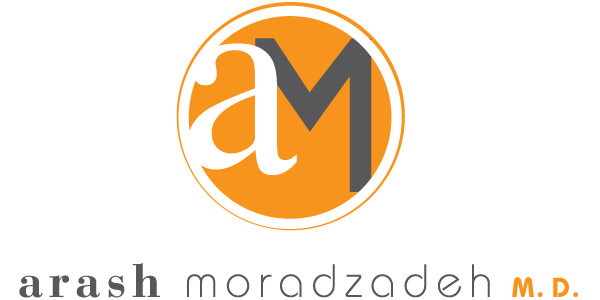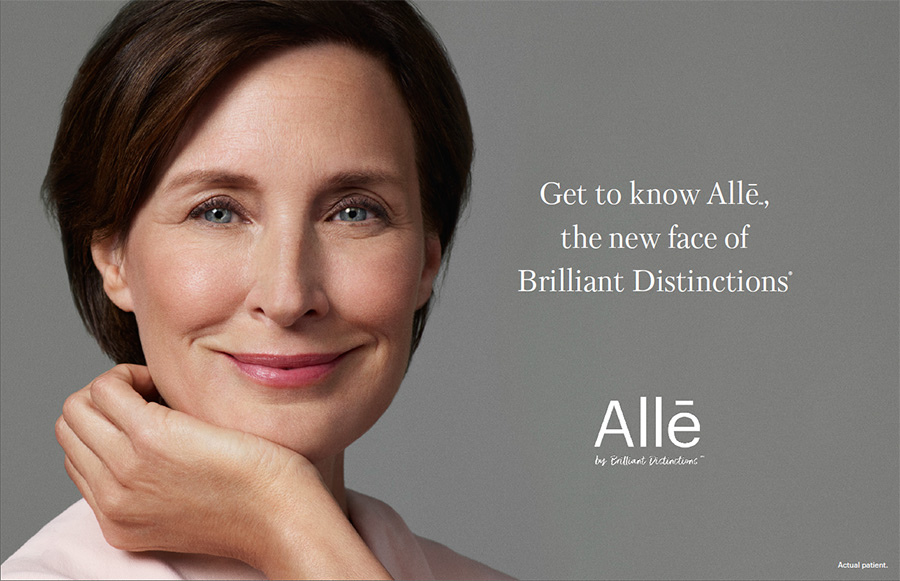Serving Beverly Hills, Los Angeles, Santa Barbara and surrounding areas
A facelift, or rhytidectomy, is a surgical procedure that removes excess facial skin and lifts the deeper tissues (SMAS) to create a more youthful appearance and minimize visible skin wrinkles and jowl lines on the face and neck. The results can be subtle or dramatic, depending on the effects the patient wants to achieve.
Aging of the face is inevitable. As the years go by, the skin begins to loosen on the face and neck. Crow’s feet appear at the corners of the eyes. Fine forehead lines become creases and then, gradually, deeper folds. The jawline softens into jowls, and beneath the chin, another chin or vertical folds appear at the front of the neck. Heredity, personal habits, the pull of gravity, and sun exposure all contribute to the aging of the face. As the aging population grows, it is understandable why rhytidectomy has become the third most popular facial plastic surgical procedure.
There are several different types of facelifts, and the following are the most common:
Mini facelift
SMAS facelift
Deep plane facelift
Full facelift
SMAS FACELIFT
A SMAS facelift is a type of facelift that involves the repositioning of the deeper tissue layers of the face to produce long lasting results. The SMAS layer of the face is the layer of tissue that contains the facial muscles and the overlying facial fat and skin. These layers become lax with age, resulting in deep folds around the mouth and sagging facial fat that cause jowls and loss of jawline definition.
A SMAS facelift elevates and “fixes” these layers to a more youthful position, providing definition to the cheekbones, better contour of the cheeks, and a crisper jawline. Since the skin is not pulled with this type of facelift, patients avoid the dreaded “wind-swept” look that screams of a facelift. And because a SMAS facelift doesn’t create tension on the skin, the results appear softer and more natural looking.
The SMAS facelift is ideal for those individuals with extra skin and laxity of the neck and jowl area of the face. By elevating the deeper SMAS tissue, the jawline is given a smoother contour and the jaw and neckline become better defined.
A SMAS facelift involves more intricate and sophisticated surgical techniques to elevate the deeper layers of the face. Generally only those surgeons with formal training feel comfortable with these more advanced techniques. Dr. Moradzadeh is an expert in the SMAS facelift procedure and will be happy to discuss whether it’s a viable option for what you are trying to achieve.
DEEP PLANE FACELIFT
The deep plane facelift is an advanced surgical technique that’s designed to address the mid-facial sagging that often occurs with age. (The mid-face is an area that is often overlooked with other facelift techniques.) As people age, they not only lose volume in their faces but the support tissues also relax and descends as well. In some individuals, this creates a deep line from the nose to the corner of the mouth (known as the nasolabial fold). In those individuals with a deep nasolabial fold, simply tightening the skin will not create a more refreshed look. That’s where a deep plane facelift is particularly beneficial. The procedure replaces the mid-facial tissues back into the check, creating a refreshed and rejuvenated appearance. It also creates more volume in the cheek through surgical elevation. In essence, this technique can provide a comprehensive rejuvenation of the lower two-thirds of the face.
In deep plane facelift surgery, incisions are carefully tapered around the ear to minimize any visibility. A key advantage of this technique is that it uses the deeper SMAS layer for strength and support, so there is no tension on the skin. This, in turn, leads to longer-lasting and more natural-looking results.
Deep plane facelift surgery can be performed at any age, but it tends to be performed mostly in patients in their 40s, 50s and 60s, the ages when they notice drooping of the mid-facial area and creation of lines and nasolabial folds in the face.
How Do You Decide on Which Facelift Technique?
It is best to have a facelift consultation with Dr. Moradzadeh to determine which surgical approach is best for you, based upon the goals you are trying to achieve. He will examine your skin type, review any medical concerns and discuss your lifestyle and recovery plans to develop a plan that is tailored specifically to your needs.
FULL FACELIFT
A full facelift is a surgical rejuvenation of all four of the following areas:
- the forehead and upper eyelids
- the mid face and lower eyelids
- the lower face and lips
- the neck
Facelift surgery continues to evolve. Over the years, the procedure has changed from simple skin lifting to more complex deeper plane lifting techniques. The treatment usually involves incisions that are made in front of and behind the ear — and that often extend into the scalp. Once the incisions are made, various degrees of skin manipulation are performed, and the deeper layers of the face are ‘lifted’. Muscle tightening as well as liposuction of the neck and jowls may be also performed, and excess skin either removed or repositioned. The results are a reversal of the effects of gravity and tightening of soft tissues of the face to restore a more youthful contour to the face.
After trimming the excess skin, the surgeon closes the incisions with fine sutures and/or metal clips, which permit surgery without shaving hair from the incision site. Depending on the extent of the surgery, the process can take anywhere from two to four hours. When the procedure is performed with a combination of mild sedatives, local anesthesia, and a mild intravenous anesthesia, the patient will experience little discomfort. Following the surgery, the surgeon will apply a dressing to protect the entire area where the incisions have been made.
What to Expect Afterwards
The amount of recovery time from facelift surgery varies among individuals. Elevation of the head is extremely helpful in reducing the initial post-operative swelling. Intermittent use of ice packs may also help relieve the swelling.
Patients should avoid aspirin and non-steroidal anti-inflammatory medications for the first few days after surgery. Smoking and exposure to second-hand smoke should also be avoided to prevent delays in the healing process.
Once the dressings are removed, puffiness and discoloration may be more pronounced in some portions of the face than others. Patients needn’t be alarmed by any unevenness or temporary asymmetry that appears in the face. This is normal. While most of the swelling will occur during the first 24 to 48 hours, some mild swelling, bruising and numbness may persist for several weeks. Continuing to sleep upright for several nights after the operation will also reduce the swelling.
In addition to swelling, patients may experience numbness of the face and neck for several weeks after surgery — sometimes longer. It is important to avoid any bending or heavy lifting for two weeks following surgery because this can cause a rushing of the blood to the face, leading to discomfort and occasionally some minor bleeding. The sutures around the ear are usually removed between five and seven days following.
On the third or fourth day after the procedure, patients can generally start washing their hair and gently blowing it dry. Cosmetic make-up may be used but should not be applied around the suture line in order to allow it to heal for two to three weeks after the surgery.
Perming and hair coloring can be resumed from four to six weeks afterwards, depending on the extent of the surgery. As with any major surgery, patients may feel tired for a few days after the operation, and this can last for two to three weeks.
Serious physical or gym activity and aerobics exercise are best avoided for up to one month following surgery although gentle exercise such as swimming is permitted once the wounds are soundly healed.
Straining, bending, and lifting should be avoided during the early post-operative period as these activities may predispose patients to bleeding.
Dr. Moradzadeh will provide specific post-operative instructions, including how to care for the dressings and incisions, what medications to take, specific concerns to look out for, and when to follow up with an office visit to monitor the healing process. It may take several months for the swelling to fully resolve, and up to 6 months for the incision scars to fully fade. Avoiding factors that could reduce the benefits of the surgery, such as excessive unprotected sun exposure and cigarette use, is essential.
Is a Facelift Right for You?
Facial plastic surgery makes it possible to correct many facial flaws and signs of premature aging that can undermine self-confidence. By restoring your facial features, cosmetic surgery can help change how you feel about yourself.
As with all facial plastic surgery, good health and realistic expectations of what can and cannot be achieved are essential. It’s important to keep in mind that there is no ideal in a facelift. Rather, the goal is to improve the overall facial appearance — not achieve perfection. Skin type, ethnic background, degree of skin elasticity, individual healing and basic bone structure are all factors that affect the outcome, and will be discussed with Dr. Moradzadeh prior to surgery. An honest and open discussion with the doctor will help you decide if the procedure is right for you.
Insurance does not cover surgery that is done purely for cosmetic reasons. However, surgery to correct or improve genetic deformity or traumatic injury may be reimbursable in part.
Other Considerations
Before deciding on a facelift, you should discuss with Dr. Moradzadeh whether the overall effect will be more successful if additional changes are made in the chin and neck areas through other facial surgery. Many patients decide to have neck liposuction to remove excess fatty deposits in conjunction with a facelift. If several flaws need correction, more than one procedure may be necessary for the best overall result.


